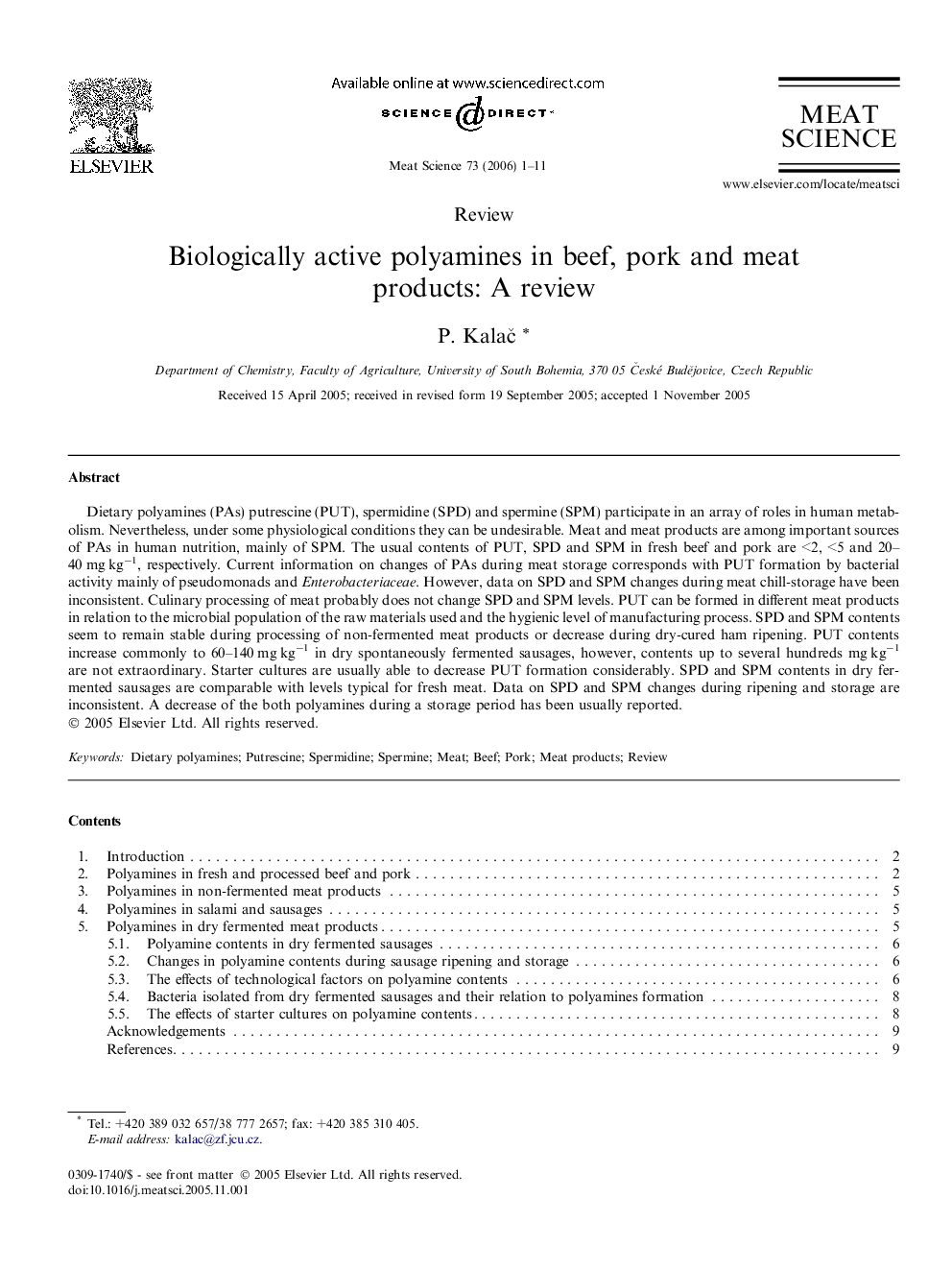| کد مقاله | کد نشریه | سال انتشار | مقاله انگلیسی | نسخه تمام متن |
|---|---|---|---|---|
| 2452179 | 1109709 | 2006 | 11 صفحه PDF | دانلود رایگان |

Dietary polyamines (PAs) putrescine (PUT), spermidine (SPD) and spermine (SPM) participate in an array of roles in human metabolism. Nevertheless, under some physiological conditions they can be undesirable. Meat and meat products are among important sources of PAs in human nutrition, mainly of SPM. The usual contents of PUT, SPD and SPM in fresh beef and pork are <2, <5 and 20–40 mg kg−1, respectively. Current information on changes of PAs during meat storage corresponds with PUT formation by bacterial activity mainly of pseudomonads and Enterobacteriaceae. However, data on SPD and SPM changes during meat chill-storage have been inconsistent. Culinary processing of meat probably does not change SPD and SPM levels. PUT can be formed in different meat products in relation to the microbial population of the raw materials used and the hygienic level of manufacturing process. SPD and SPM contents seem to remain stable during processing of non-fermented meat products or decrease during dry-cured ham ripening. PUT contents increase commonly to 60–140 mg kg−1 in dry spontaneously fermented sausages, however, contents up to several hundreds mg kg−1 are not extraordinary. Starter cultures are usually able to decrease PUT formation considerably. SPD and SPM contents in dry fermented sausages are comparable with levels typical for fresh meat. Data on SPD and SPM changes during ripening and storage are inconsistent. A decrease of the both polyamines during a storage period has been usually reported.
Journal: Meat Science - Volume 73, Issue 1, May 2006, Pages 1–11